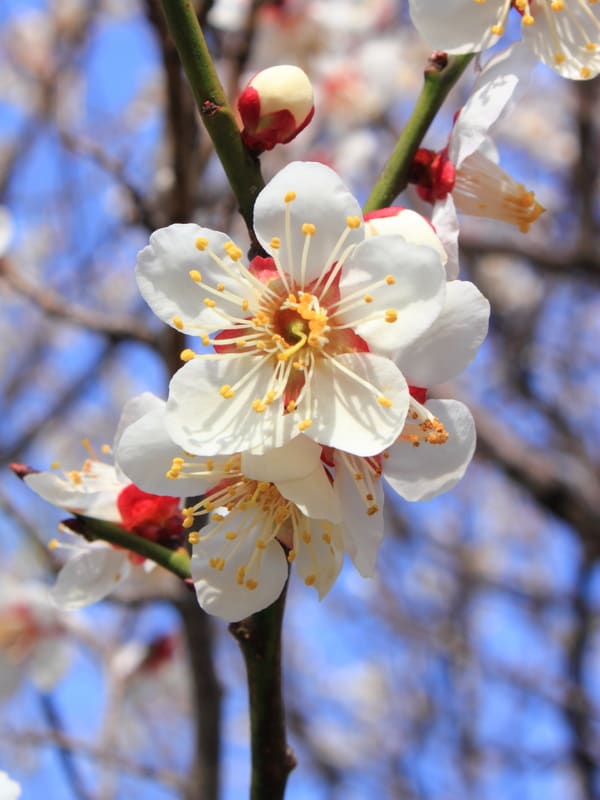
🌿 Morphology
🌞 Growing conditions
🌍 Origin and family
🌾 Uses
Warning: Despite the care taken in writing this sheet, it is essential to cross-reference sources before using or consuming any plant. When in doubt, consult a qualified professional
Permaculture uses
Edible fruit used in jams, pickles, and beverages. Flowers are ornamental and attract pollinators. Can be used as a windbreak or in erosion control due to its dense growth habit. The 'Beni-chidori' cultivar is prized for its weeping habit and profuse pink blossoms.
Permapeople description
A small, deciduous tree with fragrant flowers that bloom in late winter or early spring. The fruit is edible but often sour.
Botanical description
Prunus mume is a deciduous tree typically reaching 15-30 feet tall. The bark is gray-brown and often develops an attractive, gnarled appearance with age. Leaves are alternate, ovate to lanceolate, and serrated. Flowers are fragrant, typically appearing in late winter to early spring before the leaves emerge. Flower colors range from white to pink to red. The fruit is a drupe, similar in appearance to an apricot, with a tart flavor. The plant is native to China and has been cultivated for centuries in East Asia.
Companion planting
Generally compatible with other fruit trees and flowering shrubs. Avoid planting near plants susceptible to similar fungal diseases. Consider underplanting with spring-blooming bulbs or shade-tolerant groundcovers.
Propagation methods
Seed propagation is possible, but stratification is required. Cuttings, grafting, and budding are also commonly used propagation methods. Grafting onto Prunus cerasifera rootstock is a common technique.
History and traditions
Prunus mume has a long history of cultivation in China, Korea, and Japan. It is highly valued for its ornamental beauty and its fruit. In traditional Chinese medicine, the unripe fruit is used to treat various ailments. It is a common subject in East Asian art and literature, symbolizing perseverance, renewal, and the arrival of spring.
Usage calendar
Flowering: Late Winter - Early Spring. Fruiting: Late Spring - Early Summer. Pruning: Late Winter, after flowering. Planting: Late Fall - Early Spring (dormant season). Harvesting: May - June.
